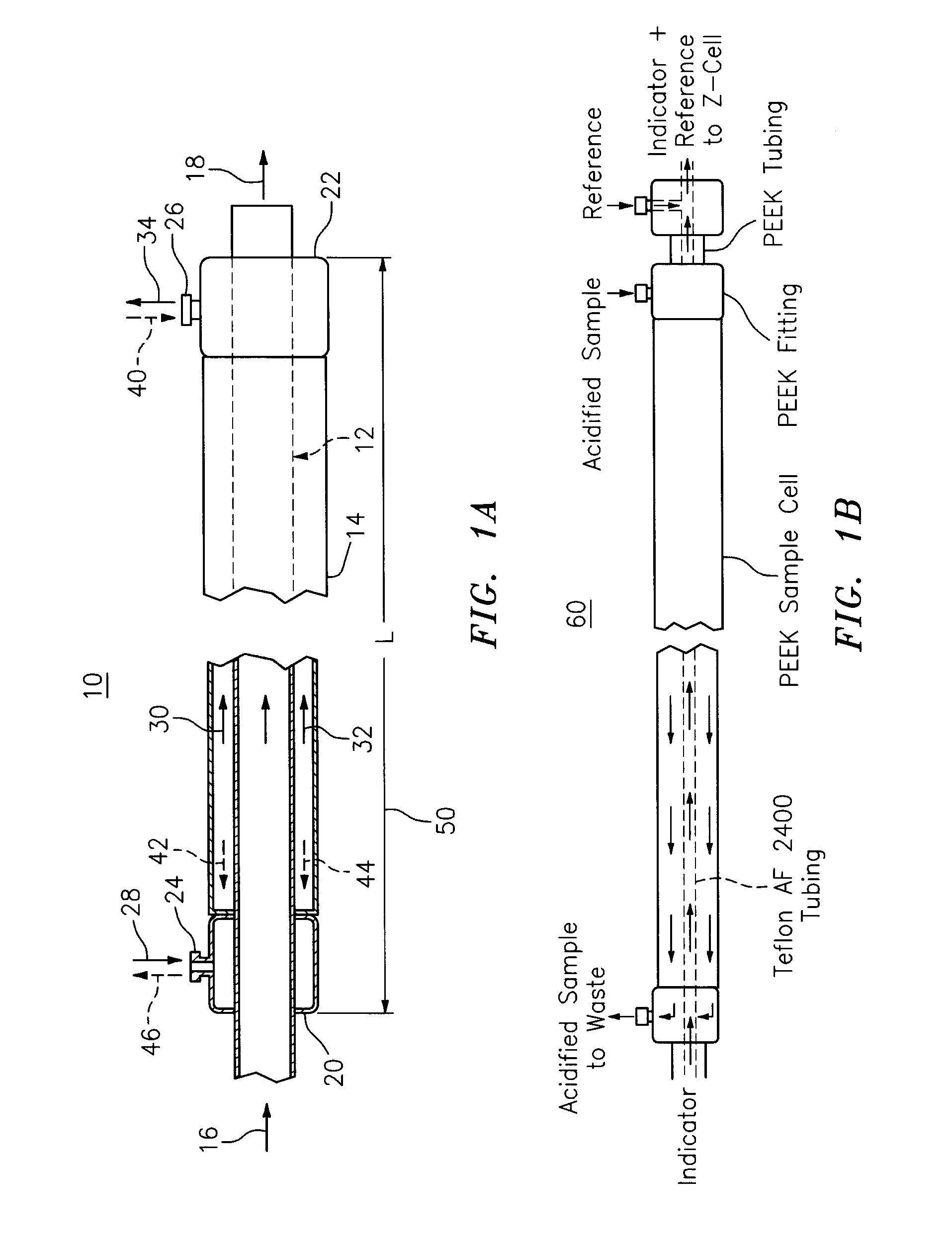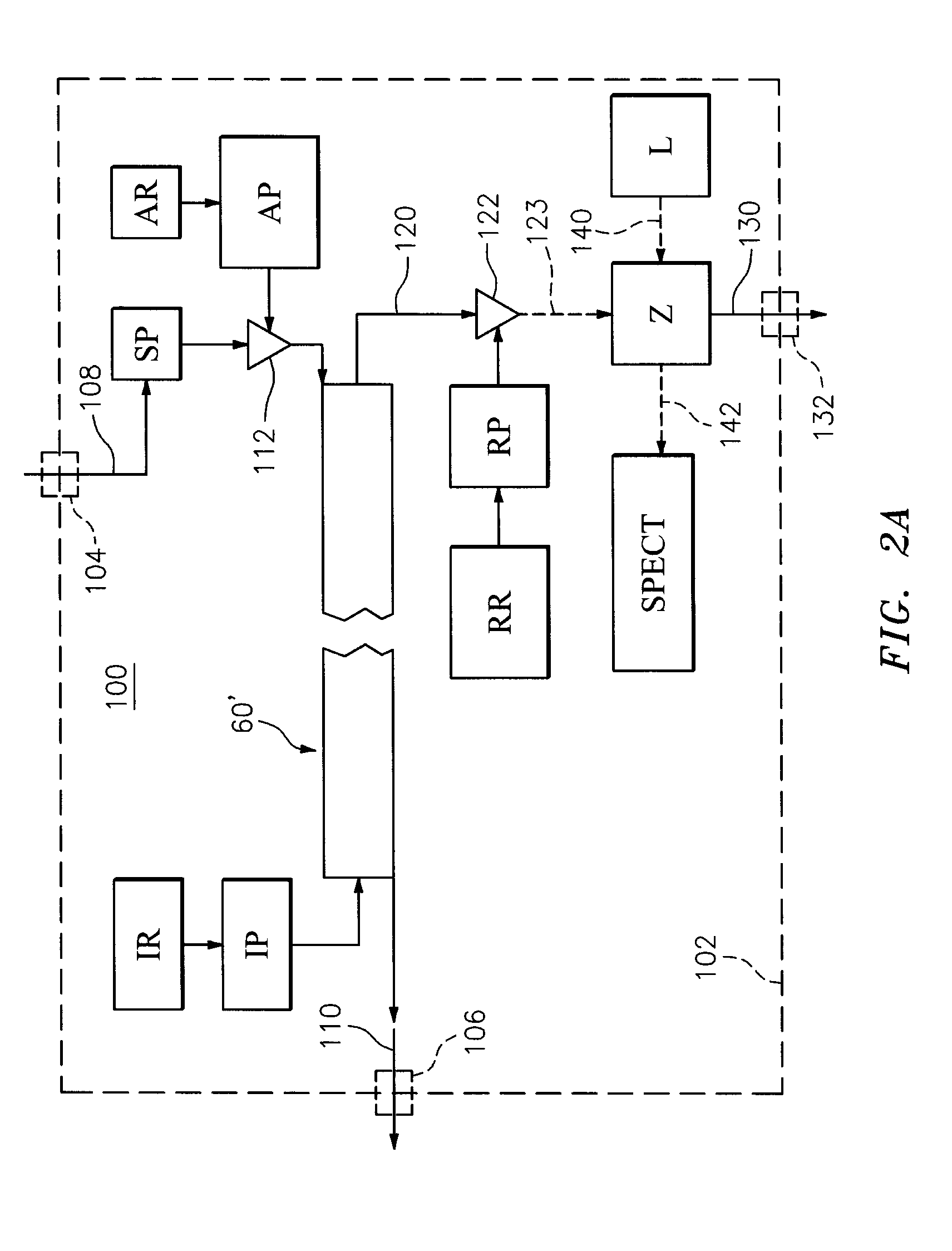System and Method to Measure Dissolved Gases in Liquid
a technology of dissolved gas and liquid, applied in the field of systems and methods of measuring dissolved gases, can solve the problems of generating a range of calculation errors, and reducing seawater buffering capacity, so as to reduce the need for laboratory calibration, reduce the need for calculation errors, and reduce the effect of measurement quality
- Summary
- Abstract
- Description
- Claims
- Application Information
AI Technical Summary
Benefits of technology
Problems solved by technology
Method used
Image
Examples
Embodiment Construction
[0042]This invention may be accomplished by systems and methods that rapidly and at least substantially continuously measure at least one pre-selected dissolved gas, such as dissolved carbon dioxide or any suitable measurable substance which provides a colorimetric or detectable chemical change dependent on substance concentration or suitable gas utilizing a gas / liquid equilibrium (e.g., carbon dioxide or ammonia), within a sample liquid such as freshwater or seawater obtained from a quantity of the liquid such as a pond, lake, stream, bay, or ocean. The system and method include selecting a sample processing cell having at least a first conduit defining a first passage with at least one gas-permeable wall (e.g., membrane) capable of passing at least the pre-selected dissolved gas from the sample liquid into a reagent fluid. The at least one gas-permeable wall substantially resists flow of the sample liquid therethrough, that is, it maintains liquid separation between the sample and...
PUM
| Property | Measurement | Unit |
|---|---|---|
| depths | aaaaa | aaaaa |
| transit time | aaaaa | aaaaa |
| transit time | aaaaa | aaaaa |
Abstract
Description
Claims
Application Information
 Login to View More
Login to View More - R&D
- Intellectual Property
- Life Sciences
- Materials
- Tech Scout
- Unparalleled Data Quality
- Higher Quality Content
- 60% Fewer Hallucinations
Browse by: Latest US Patents, China's latest patents, Technical Efficacy Thesaurus, Application Domain, Technology Topic, Popular Technical Reports.
© 2025 PatSnap. All rights reserved.Legal|Privacy policy|Modern Slavery Act Transparency Statement|Sitemap|About US| Contact US: help@patsnap.com



